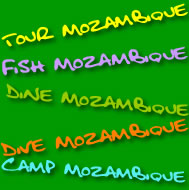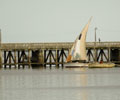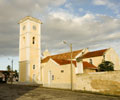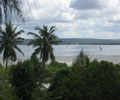THE
HISTORY OF MOZAMBIQUE
Mozambique’s
recorded history goes back many centuries and the country
has been subject to conquest and exploitation since time immemorial.
As early as AD600 Arab traders had established contact with
the local people and subsequently established fortified trading
posts along the coastline. Via these trading posts slaves,
gold and ivory were shipped to the Arab world. The Portuguese
first arrived in 1488 and established a firm presence along
the coast ousting the Arabs from their impenetrable evil trading
stations by 1510.
The
Portuguese established their seat of colonial power on Mozambique
Island, constructing the imposing Fortress of Saint Sebastian
over a period of several decades after 1558. The town survived
a number of attacks from Arabs and the United East India Company
and remained the chief trading port and capital city of the
Portuguese Province of Mozambique up until 1886, when Lourenço
Marques (Maputo) replaced it as the territory’s capital.
The
fortunes kept in the old fortified trading posts along the
Moçambique coast were earned in the horrific slave
trade, from ivory and gold. As the routes along which this
bounty travelled terminated at these settlements on the Indian
Ocean. As a result of this the towns of Ibo; Mozambique; Sofala
and Quelimane were established. Instead of things becoming
better for the native Africans Powerful family dynasties from
Portugal established control over vast areas of the interior;
often aligned with local African chieftains and Muslim traders;
and controlled the flow of gold; ivory and slaves to the coastal
markets. These fiefdoms traded with the ancient empire of
the Mwana Mutapa in present-day Zimbabwe and exerted their
control and influence over their territories by force of arms;
as did the British; French and Belgium’s more recently
on Africa’s west coast.
The
Portuguese were content to limit their direct colonial control
over the trading ports at the coast and exhibited little interest
in establishing formal control over the interior regions of
the country for more than two centuries after their arrival.
Their control of the trading ports ensured that the wealth
of the interior was channelled into their coffers. Trading
routes were established from present-day Malawi to the coast
at Ibo and Moçambique Island and from Tete and present
day Zimbabwe to the coast at Sofala; which was ultimately
replaced by the modern port at Beira. Similarly in the south
trading routes were established from Lourenço Marques
to South Africa; purely as a means for the Portuguese to extract
the wealth of the interior. Despite the fact that the Portuguese
had been the dominant power in Mozambique from 1500 they had
never bothered to formalise the extent of their control and
the boundaries of the modern state of Mozambique were only
finalised in 1891 as a result of the British occupation of
present-day Zimbabwe.
The
Portuguese Government resisted the tide of African nationalism;
which swept Africa after the close of the Second World War
and were content with the status of their African colonies
as Provinces of Portugal. A guerrilla war ensued during the
1960’s and 1970’s and the 1974 Portuguese revolution,
which toppled the dictator Caetano, precipitated a collapse
of the Portuguese administration in Mozambique.
Frelimo,
the national resistance movement; swept to power as the Portuguese
abandoned their colony precipitating the flight of most of
the Portuguese inhabitants of Mozambique. The economy of the
territory collapsed. Frelimo instituted strict Marxist and
Communist policies in the new independent state nationalising
commercial farms; mines and commercial enterprises; which
exacerbated the decline of the already collapsed economy.
A civil war broke out between Frelimo and Renamo; a resistance
movement originally established and supported by the Rhodesian
and South African Governments to destabilise the hostile Frelimo
administration. The civil war, which raged for 17 years until
1994, destroyed the sparse infrastructure of the country and
decimated Mozambique’s economy.
Large-scale
emigration by whites, economic dependence on South Africa,
a severe drought, and a prolonged civil war hindered the country’s
development. The ruling party formally abandoned Marxism in
1989, and a new constitution the following year provided for
multiparty elections and a free market economy. A UN-negotiated
peace agreement with rebel forces ended the fighting in 1992.
The
peace treaty concluded in 1994 brought peace to the country
and was followed by elections; which gave Frelimo a slender
majority in parliament. Frelimo abandoned its former socialist
policies and the country embarked on a programme of drastic
economic restructuring; resulting in a sustained period of
economic growth and political stability. Almost five centuries
as a Portuguese colony came to a close with independence in
1975.
|







